Whether the results were unexpected, your client changed their mind about their hair, or if the grays are extra resistant, toning henna is something that you should become familiar with. It is important to note that toning before henna fully oxidizes seems to give different results than toning after henna oxidizes, but this is something I’d like to study more of and elaborate in another blog. In this article, I’ll walk you through the steps in depth of toning henna from “just a tad” to a full blown gorgeous dark brunette. You can find more information on cassia here: http://www.hennaforhair.com/faq/Clarity_cassia-auriculata.pdf


Mohair was prepped with salon grade clarifying shampoo and left to dry before applying a Twilight henna and Malluma Kristalovino mix. The henna paste was left on the hair for 24 hours – 4 of those hours were in front of a heater (with the heater rotating off and on). The temperature otherwise was 65-68 degrees Fahrenheit. The purpose of the heater was to simulate body heat.
A note about mohair
If you’re not sure why we use mohair for testing, it’s because it’s very similar to human hair. We don’t have a surplus of unprocessed gray human hair. Sure, there are virgin gray hair extensions and mannequins, but the cleaning process it has to go through does alter the hair and doesn’t give us realistic results which makes for poor testing.
Test 1

Mix: Cassia powder mixed with indigo powder (distilled water for the liquid). The cassia was not dye released and no fruit acid was used with cassia. The powder did not sit for any time before application.
Toning henna before oxidation vs toning henna after oxidation





80% Clarity Cassia to 20% Sudina Indigo Before Oxidation Application vs 75% Clarity Cassia to 25% Sudina Indigo After Oxidation Application.
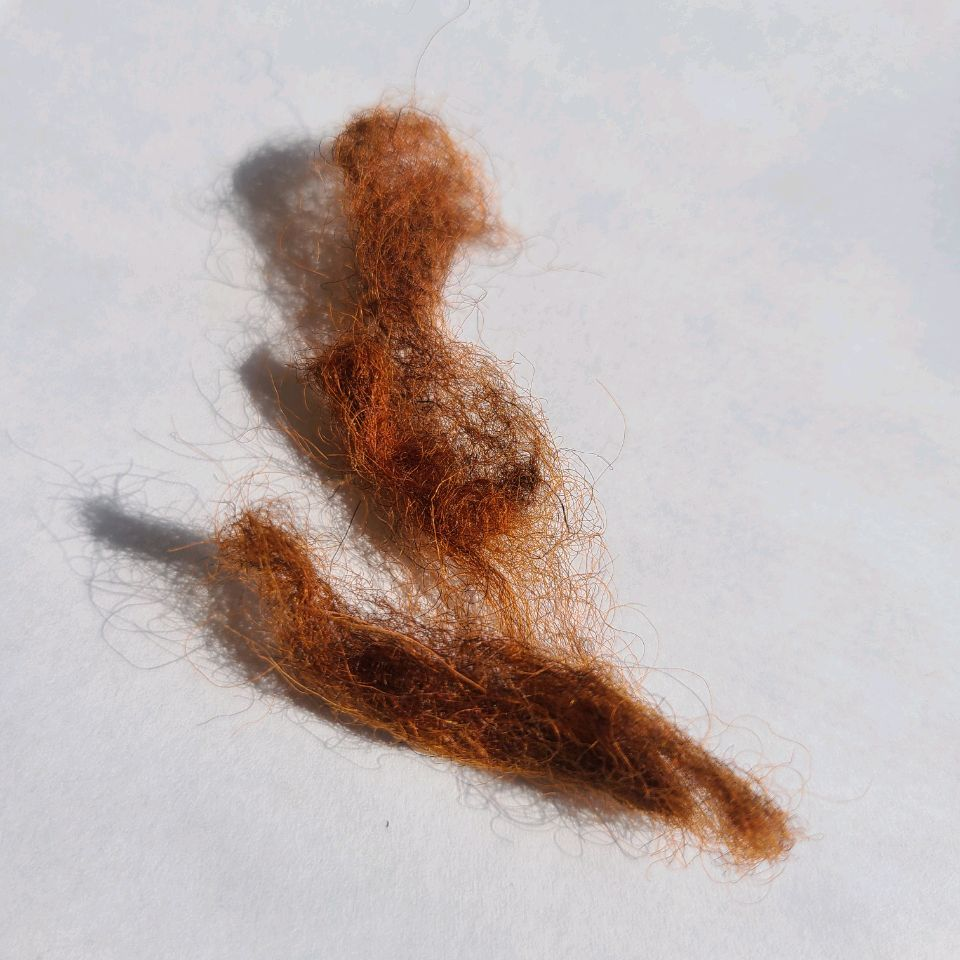
15 Minutes
There wasn’t any visible change after 15 minutes of this particular mix before oxidation, so I chose to not do one after oxidation.
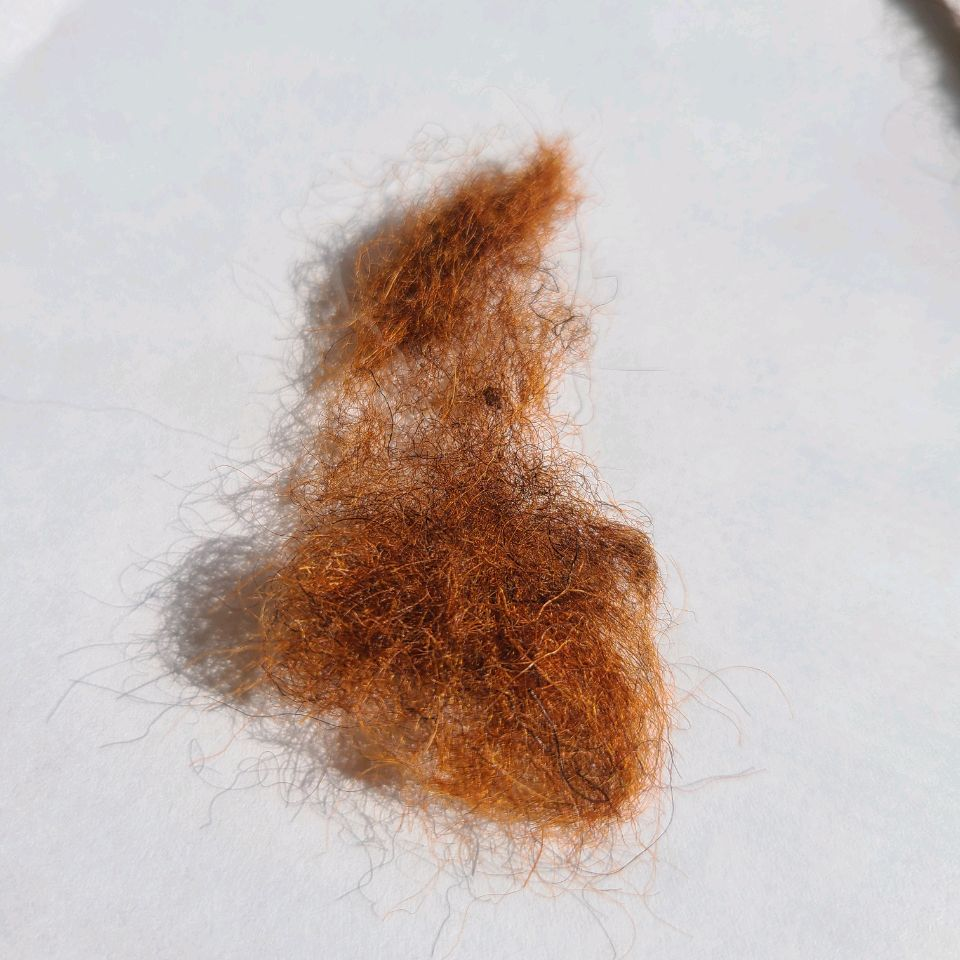
30 Minutes

30 minutes
Left side: B before oxidation application
Right side: D after oxidation application
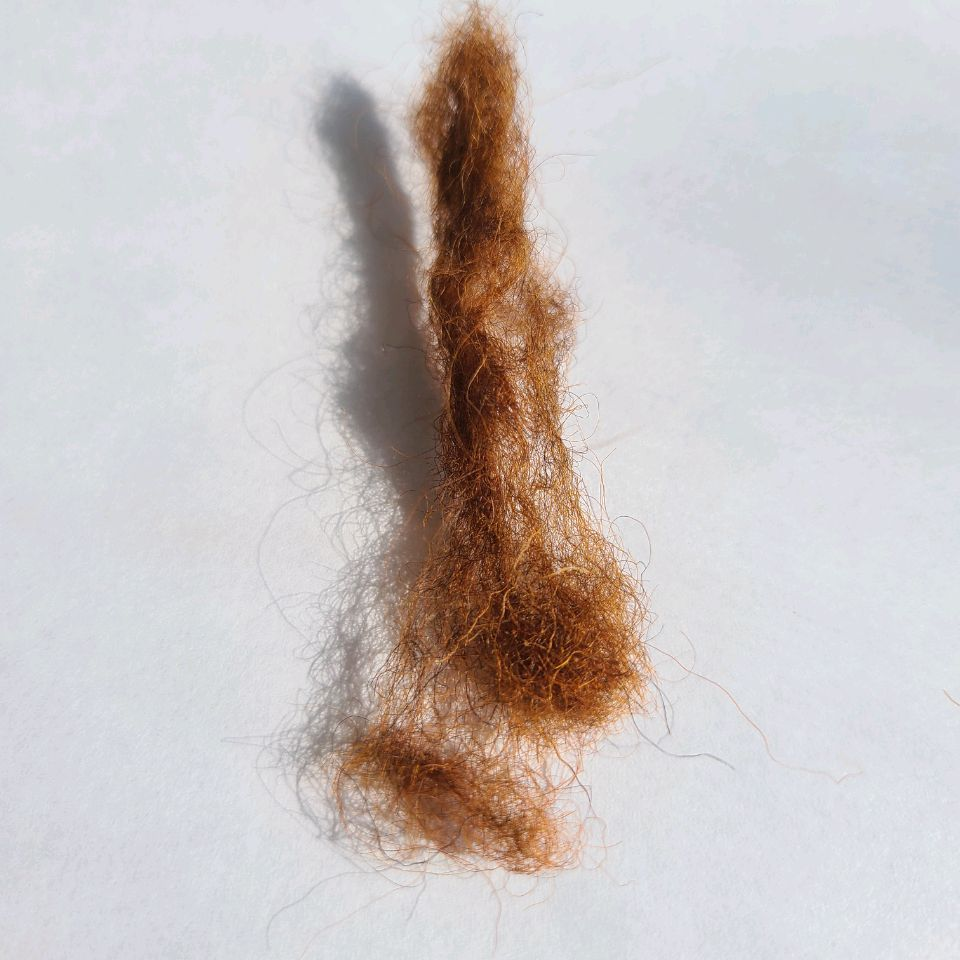
60 minutes

60 minutes
Left side: C before oxidation application
Right side: E after oxidation application
Findings
Starting with A, as noted above, 15 minutes was not long enough to change anything visibly to the hair using an 80% cassia, 20% indigo mix. I chose not to do a mix after oxidation, because it just seemed that 15 minutes is insufficient for anything less than 50% cassia to 50% indigo.
Looking at images B and D you can see a little bit of change after 30 minutes, but not much. It’s important to note that the post oxidation mix (D) had 5% less indigo and 5% more cassia than pre-oxidation. I had theorized that B would have been darker than due to the change in the formulation that was applied to the oxidized hair D. They look almost identical, but in person D is just a little bit brighter.
Finally, let’s compare the strands that sat for an hour. Visibly, it’s clear that there was a color change. However, when you compare the samples in C and E you can see that the pre-oxidation application (C) is different than the post oxidized application (E). Again, I had expected the formula that was used on E would be darker, because it had more indigo and less cassia, but C actually looks slightly darker and appears more brown.
Test 2
Mix: Cassia powder mixed with indigo powder (distilled water for the liquid). The cassia was not dye released and no fruit acid was used with cassia. The powder did not sit for any time before application.
Toning Oxidized Hennaed Hair
Toning percentages based on powder weight:
10% indigo, 90% cassia: 30 minutes A, 1 hour B
25% indigo, 75% cassia: 30 minutes C, 1 hour D
50% indigo, 50% cassia: 15 minutes E, 30 minutes F, 1 hour G
75% indigo, 25% cassia: 15 minutes H, 30 minutes I, 1 hour J
90% indigo, 80% cassia: 15 minutes K, 30 minutes L, 1 hour M

Control 
A
10 i; 90 c (30)
B
10 i; 90 c (60)
C
25 i; 75 c (30)
D
25 i; 75 c (60)
E
50 i; 50 c (15)
F
50 i; 50 c (30)
G
50 i; 50 c (60)
H
75 i; 25 c (15)
I
75 i; 25 c (30)
J
75 i; 25 c (60)
K
90 i; 10 c (15)
L
90 i; 10 c (30)
M
90 i; 10 c (60)
Top left big chunk of hair – Control. First column – 15 minutes.
Second column – 30 minutes. Third Column – 60 minutes.
Notes and Observations
The Results
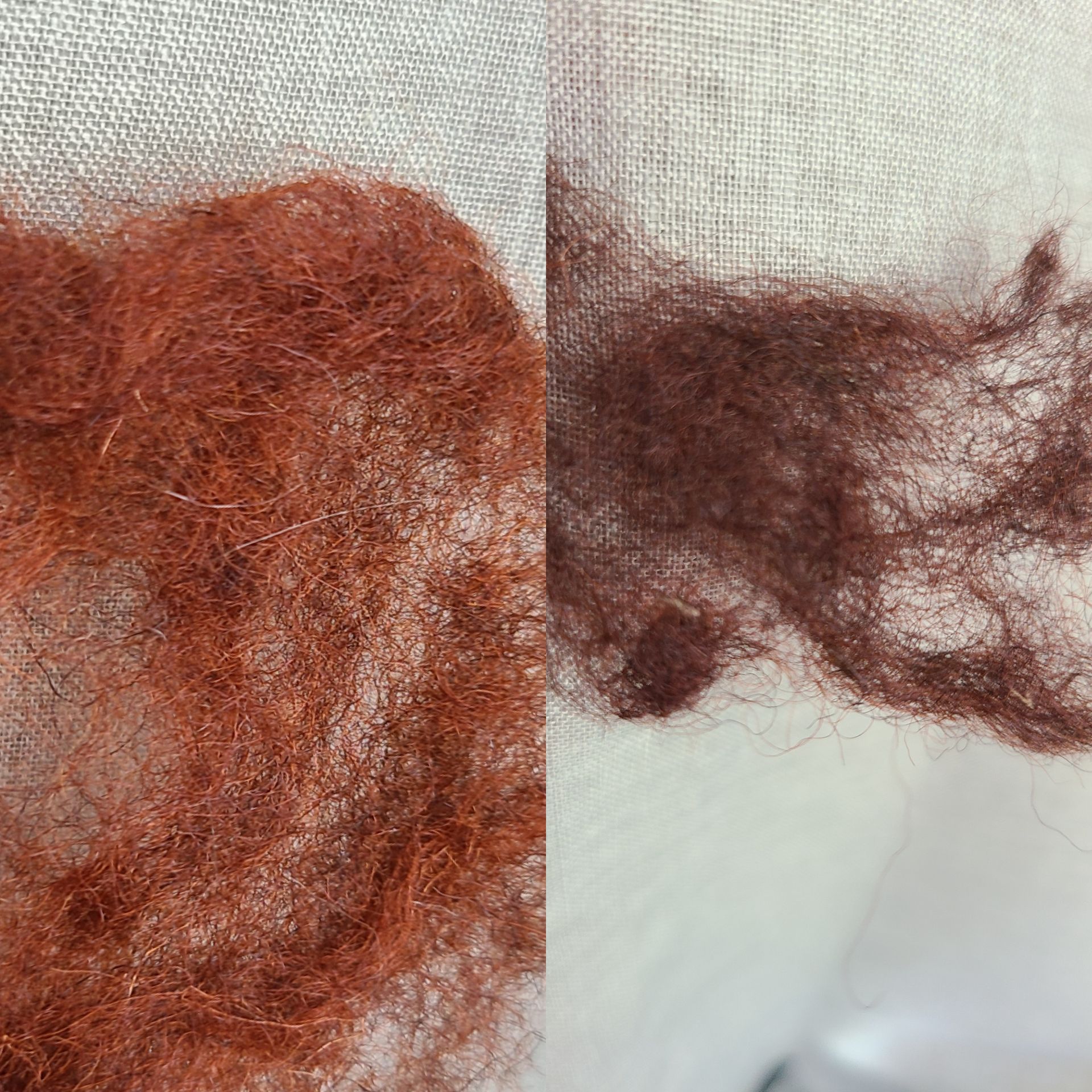
It makes sense that as the ratio of indigo increases and cassia decreases, that the results get darker and less red. While some of the ratios are different, the results are similar at different timings. For example: there are similarities between J and L. J was 75% indigo and 25% cassia, but left on for one hour, where as L was 90% indigo and 10% cassia but left on for 30 minutes. This can be helpful, because if you have to tone thick and/or long hair, you may want to start out with using 75% indigo and 25% cassia, but then half way through switch to 90% indigo and 10% cassia so that way your results blend, and you don’t end up with one part of the hair being much darker than the rest.
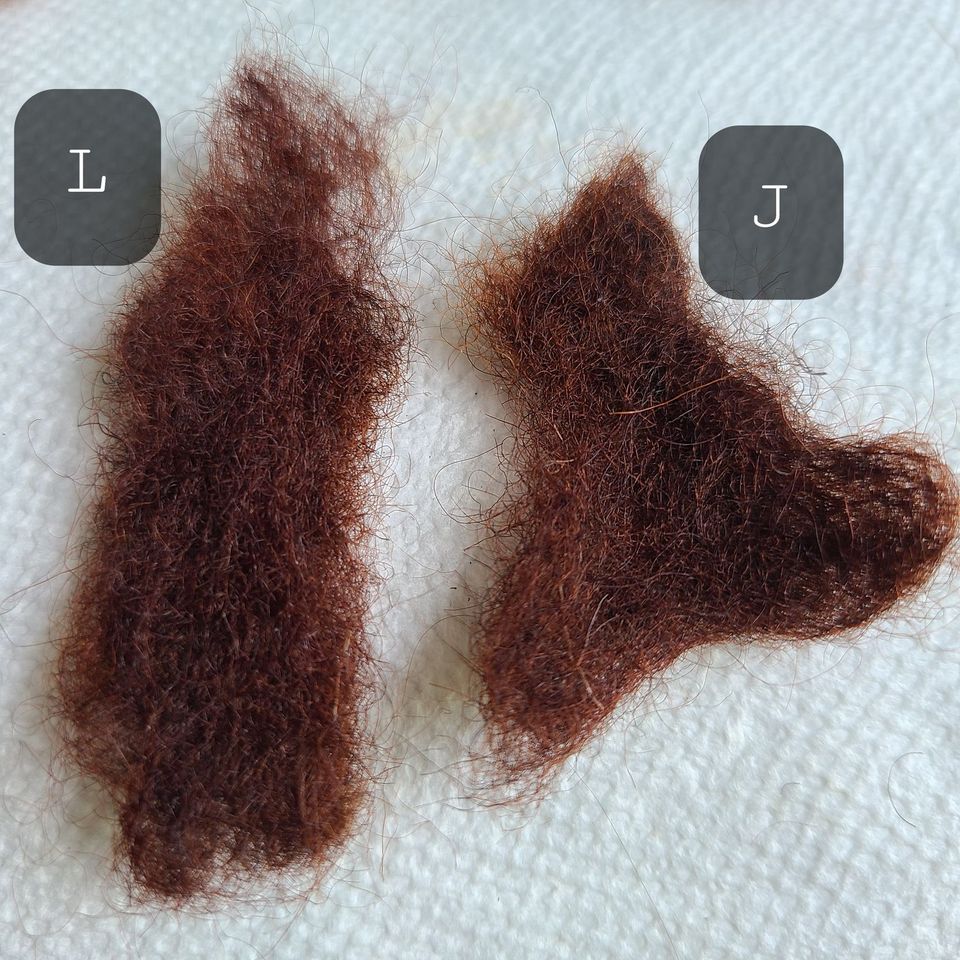
There are also similarities between mix I and K. Mix I is 75% indigo and 25% cassia left on the hair for 30 minutes. Mix K is 90% indigo and 10% cassia left on the hair for 15 minutes.
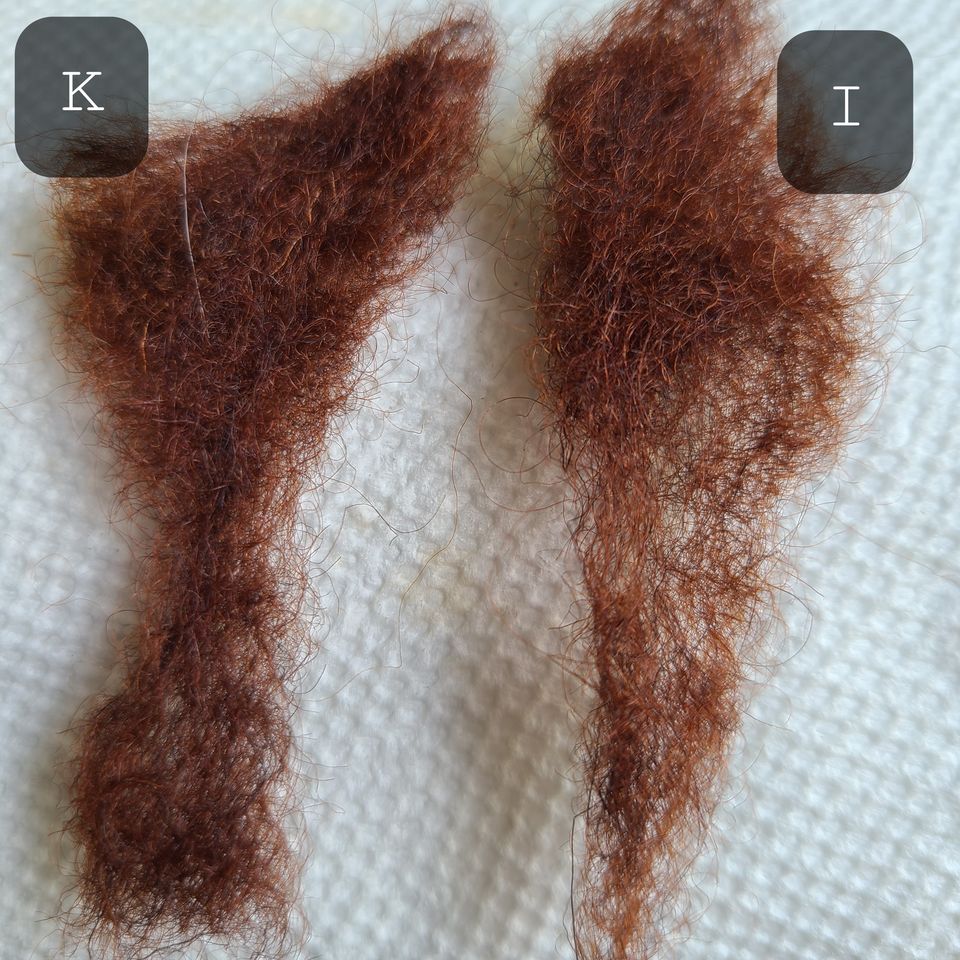
Toning non-gray hair
It’s important to note that when you’re considering a mix for toning, you should observe the starting level and keep in mind how well the hair absorbs indigo. What may work for one client, may not work for another. The best way to determine the best ratio and timing for your client’s specific hair, is to do a small test. This will take time initially, but will save you time if the mix and timing you tested didn’t quite work out. (Can you imagine having to keep reapplying a mix because it didn’t come out the way you were expecting? Eek!).
Toning freshly hennaed hair
More research is needed to compare using these exact mixes on freshly hennaed hair. If you feel that you need to tone freshly hennaed hair, again, testing is recommended to be on the safe side. The most important information to take with you from this section is that hennaed hair, regardless if it’s only henna, henna/indigo, or henna/indigo/cassia need to oxidize for at least 5 days. You can expect another blog on this specific subject comparing the same mixes on freshly hennaed hair to get a better observation on this particular subject.
Lowlights
This technique doesn’t have to be used just for toning henna. One could do lowlights on hennaed hair by using different ratios of indigo and cassia. The mix could be created on the fly, and could be a nice service to add in when one wants more dimension.
In conclusion, it’s safe to say that cassia and indigo can be used for toning down bright hair. It seems that, unless the toning mix is more than 50% indigo, there really isn’t a point to leave the mix on for less than 30 minutes.
 Maria • Ancient Sunrise Specialist • Licensed Cosmetologist
Maria • Ancient Sunrise Specialist • Licensed Cosmetologist
